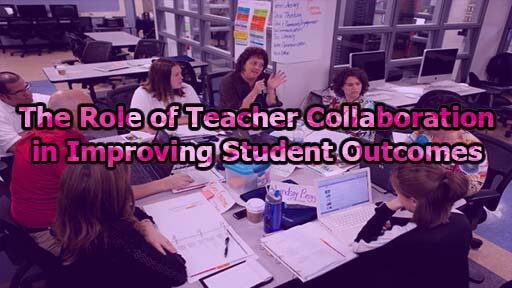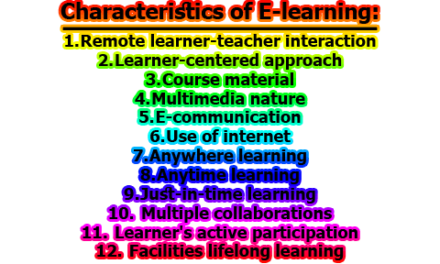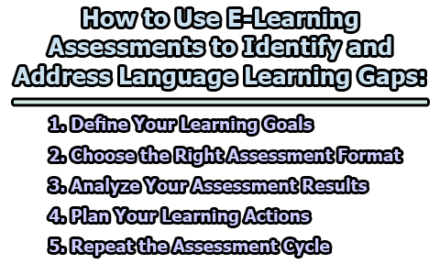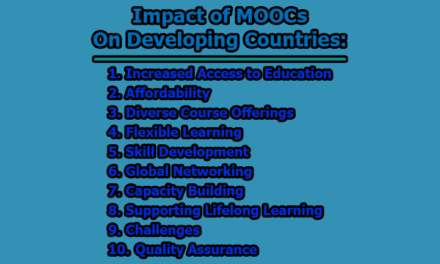The Role of Teacher Collaboration in Improving Student Outcomes:
Collaboration among teachers has been acknowledged as an essential factor that can enhance student learning outcomes. As teachers work together to share their knowledge, experience, and resources, they can develop innovative teaching strategies that can lead to improved student engagement, achievement, and success. Collaboration can help teachers to learn from each other, support each other, and provide the necessary feedback that can enable them to improve their teaching practices. In this article, we will explore the role of teacher collaboration in improving student outcomes based on the various types of collaboration, strategies of collaboration, the benefits of collaboration, and the challenges that teachers may face when collaborating.
Types of Collaboration:
There are different types of collaboration that teachers can engage in to improve student outcomes. These include formal and informal collaborations, collaborative planning, and professional learning communities (PLCs).
1. Formal Collaborations: Formal collaborations are structured collaborations that are established by schools or educational organizations. These collaborations may involve teams of teachers who work together to develop curriculum, assessment, or instructional practices. The purpose of these collaborations is to promote coherence and consistency in teaching across different classrooms and grade levels. Formal collaborations can be effective in ensuring that all students have access to high-quality instruction and that they receive consistent feedback on their progress.
2. Informal Collaborations: Informal collaborations, on the other hand, are less structured and more spontaneous. These collaborations may occur when teachers share ideas, resources, or strategies with each other during lunch breaks or after school. Informal collaborations can be effective in promoting teacher innovation and creativity. They can also provide opportunities for teachers to build supportive relationships with each other, which can help to reduce stress and burnout.
3. Collaborative Planning: Collaborative planning involves teachers working together to plan lessons, units, or projects. Collaborative planning can be effective in ensuring that teachers have a shared understanding of the goals and objectives of the curriculum. It can also help to identify areas of strength and weakness in instructional practices and to develop strategies for addressing these areas. Collaborative planning can be particularly effective when teachers work together to develop interdisciplinary units that integrate different subject areas.
4. Professional Learning Communities: Professional learning communities (PLCs) are groups of teachers who come together to engage in ongoing professional development. PLCs can be effective in promoting teacher learning and growth. They can provide opportunities for teachers to share their expertise, to learn from each other, and to reflect on their teaching practices. PLCs can also be effective in promoting school-wide initiatives that can improve student outcomes, such as the implementation of new instructional practices or the development of school-wide assessment systems.
Strategies for Supporting Teacher Collaboration:
Strategies for supporting teacher collaboration are crucial for improving student outcomes. Schools and districts can use the following strategies to support teacher collaboration:
- Provide time for collaboration: Schools can schedule regular team meetings, professional learning communities, or other structured opportunities for collaboration.
- Establish a collaborative culture: Schools can create a culture that values collaboration and encourages teachers to work together. This can include providing incentives for collaboration, recognizing and celebrating collaboration, and fostering a sense of community and teamwork.
- Encourage open communication: Teachers need to be able to communicate openly and honestly with one another. Schools can provide training on effective communication skills and create opportunities for teachers to practice these skills.
- Foster a growth mindset: Teachers should have a growth mindset that emphasizes learning and improvement. Schools can provide training on the benefits of a growth mindset and encourage teachers to embrace this approach.
- Provide professional development opportunities: Schools can provide professional development opportunities to support collaboration. This can include training in collaborative practices, coaching, mentoring, or other forms of support.
- Encourage peer coaching: Peer coaching can be a powerful way for teachers to collaborate and learn from each other. Schools can provide training on peer coaching and create opportunities for teachers to engage in this practice.
- Foster a sense of ownership: Teachers need to feel a sense of ownership over their collaboration efforts. Schools can involve teachers in decision-making and provide opportunities for them to take ownership of collaborative projects.
- Use technology to support collaboration: Schools can provide access to collaborative tools and technologies that facilitate communication and collaboration.
- Provide leadership support: School leaders need to support collaboration efforts and create a culture that values collaboration. Leaders can model collaborative behavior and provide resources and support for teachers.
- Encourage cross-disciplinary collaboration: Teachers from different disciplines can benefit from collaborating with each other. Schools can create opportunities for teachers to collaborate across disciplines.
- Foster collaboration between grade levels: Collaboration between teachers at different grade levels can help to ensure that students are prepared for the next level of learning. Schools can create opportunities for teachers to collaborate across grade levels.
- Provide ongoing support: Collaboration is an ongoing process that requires ongoing support. Schools can provide ongoing training, coaching, and mentoring to support teachers in their collaboration efforts.
- Encourage experimentation: Teachers need to feel free to experiment and try new approaches to collaboration. Schools can provide opportunities for teachers to experiment and learn from their experiences.
- Establish clear goals and expectations: Collaboration efforts need to have clear goals and expectations. Schools can provide training on how to establish goals and expectations for collaboration.
- Create a sense of accountability: Teachers need to be held accountable for their collaboration efforts. Schools can provide training on how to create a sense of accountability for collaborative projects.
- Celebrate successes: Schools should celebrate the successes of collaboration efforts. Celebrating successes can help to reinforce the value of collaboration and encourage further collaboration.
- Foster a sense of community: Collaboration efforts should foster a sense of community among teachers. Schools can create opportunities for teachers to socialize and build relationships with one another.
- Provide resources for collaboration: Schools can provide resources to support collaboration, such as funding for collaborative projects, access to collaborative tools and technologies, and professional development opportunities.
- Encourage reflection: Teachers need to reflect on their collaboration efforts and learn from their experiences. Schools can provide training on how to reflect on collaborative practices and create opportunities for teachers to reflect.
- Evaluate collaboration efforts: Schools should evaluate their collaboration efforts to determine what is working well and what needs to be improved. Schools can use this information to adjust their collaboration strategies and improve student outcomes.
Benefits of Collaboration:
Collaboration among teachers can have many benefits for student learning outcomes. These benefits include:
A. Increased Student Achievement: Collaboration among teachers can lead to improved student achievement. When teachers work together to develop effective instructional practices, they can identify strategies that are most effective in promoting student learning. They can also develop strategies for addressing the needs of struggling students, such as differentiated instruction, scaffolding, and small group instruction.
B. Enhanced Teacher Professional Development: Collaboration can provide opportunities for teachers to engage in ongoing professional development. When teachers work together to develop and implement new instructional practices, they can learn from each other, share their expertise, and reflect on their teaching practices. This can help teachers to improve their knowledge and skills, which can lead to improved student outcomes.
C. Improved Instructional Coherence and Consistency: Collaboration can help to ensure that instructional practices are consistent across different classrooms and grade levels. When teachers work together to develop curriculum, assessment, and instructional practices, they can ensure that all students have access to high-quality instruction. This can help to reduce achievement gaps and ensure that all students have an equal opportunity to succeed.
D. Enhanced Teacher Collaboration and Support: Collaboration can provide opportunities for teachers to build supportive relationships with each other. When teachers work together, they can provide feedback and support to each other, which can help to reduce stress and burnout. Collaborating can also help to promote a positive school culture, where teachers feel valued and supported.
E. Improved Parent and Community Engagement: Collaboration can also lead to improved parent and community engagement. When teachers work together to develop initiatives that promote student success, they can communicate these initiatives to parents and community members. This can help to build trust and engagement between the school and the community, which can lead to improved student outcomes.
Challenges of Collaboration:
While collaboration among teachers can have many benefits for student outcomes, there are also challenges that teachers may face when collaborating. These challenges include:
i. Time Constraints: Collaborating can be time-consuming, and teachers may struggle to find the time to work together. With the demands of lesson planning, grading, and other administrative tasks, teachers may find it difficult to carve out time for collaboration.
ii. Lack of Trust and Communication: Effective collaboration requires trust and communication among teachers. If there is a lack of trust or communication, collaboration can be difficult or even impossible. Teachers may need to work on building relationships and improving communication skills to ensure that collaboration is effective.
iii. Resistance to Change: Collaboration may require teachers to change their instructional practices, which can be challenging for some teachers. Teachers may be resistant to change, or they may feel that their expertise is being challenged. It is important to ensure that all teachers feel valued and supported when collaborating and that their expertise is recognized and respected.
iv. Different Philosophies and Approaches: Teachers may have different philosophies and approaches to teaching, which can lead to disagreements or conflicts when collaborating. It is important to ensure that all teachers have a shared understanding of the goals and objectives of collaboration and that they are willing to work together to achieve these goals.
In conclusion, collaboration among teachers can have many benefits for student outcomes. It can lead to improved student achievement, enhanced teacher professional development, improved instructional coherence and consistency, enhanced teacher collaboration and support, and improved parent and community engagement. While there are challenges to collaboration, such as time constraints, lack of trust and communication, resistance to change, and different philosophies and approaches, these challenges can be addressed through effective leadership, communication, and support. By working together, teachers can create a positive school culture that promotes student success and helps to ensure that all students have an equal opportunity to succeed.
References:
- Bryk, A. S., Sebring, P. B., Allensworth, E., Easton, J. Q., & Luppescu, S. (2010). Organizing schools for improvement: Lessons from Chicago. University of Chicago Press.
- Darling-Hammond, L., Wei, R. C., Andree, A., Richardson, N., & Orphanos, S. (2009). Professional learning in the learning profession: A status report on teacher development in the United States and abroad. National Staff Development Council.
- Fullan, M. (2006). Turnaround leadership. John Wiley & Sons.
- Hargreaves, A. (2003). Teaching in the knowledge society: Education in the age of insecurity. Teachers College Press.
- Hattie, J. (2012). Visible learning for teachers: Maximizing impact on learning. Routledge.
- Johnson, D. W., Johnson, R. T., & Smith, K. A. (2007). The state of cooperative learning in postsecondary and professional settings. Educational psychology review, 19(1), 15-29.
- Little, J. W. (2013). Professional community and professional development in the reform of American education. Teachers College Press.
- Louis, K. S., Leithwood, K., Wahlstrom, K. L., & Anderson, S. E. (2010). Investigating the links to improved student learning. The Wallace Foundation.
- Murphy, J., & Louis, K. S. (2011). Handbook of research on educational leadership for equity and diversity. Routledge.
- Smylie, M. A. (1995). Teacher collaboration as professional development in a large, suburban high school. The Elementary School Journal, 95(5), 495-509.
- Stoll, L., & Louis, K. S. (2007). Professional learning communities: Divergence, depth, and dilemmas. McGraw-Hill International.
- Buchanan, J., & Prescott, A. (2018). The impact of collaborative teacher learning on student outcomes: A systematic review and meta-analysis. Educational Research Review, 24, 74-88.
- Coburn, C. E. (2003). Rethinking scale: Moving beyond numbers to deep and lasting change. Educational Researcher, 32(6), 3-12.
- DuFour, R. (2004). What is a professional learning community? Educational leadership, 61(8), 6-11.
- Harris, A. (2010). Leading and sustaining school change: Lessons learned from principals in the field. Journal of Educational Change, 11(4), 365-381.
- Horn, I. S. (2011). Collaborative inquiry as teachers’ professional development. In Handbook of research on teacher education (pp. 628-645). Routledge.
- Horn, I. S., & Little, J. W. (2010). Attending to problems of practice: Routines and resources for professional learning in teachers’ workplace interactions. American Educational Research Journal, 47(1), 181-217.
- Little, J. W. (1990). The persistence of privacy: Autonomy and initiative in teachers’ professional relations. Teachers College Record, 91(4), 509-536.
- McLaughlin, M. W., & Talbert, J. E. (2001). Professional communities and the work of high school teaching. University of Chicago Press.
- Vescio, V., Ross, D., & Adams, A. (2008). A review of research on the impact of professional learning communities on teaching practice and student learning. Teaching and teacher education, 24(1), 80-91.
- Wenger, E. (1998). Communities of practice: Learning, meaning, and identity. Cambridge University Press.

Library Lecturer at Nurul Amin Degree College










